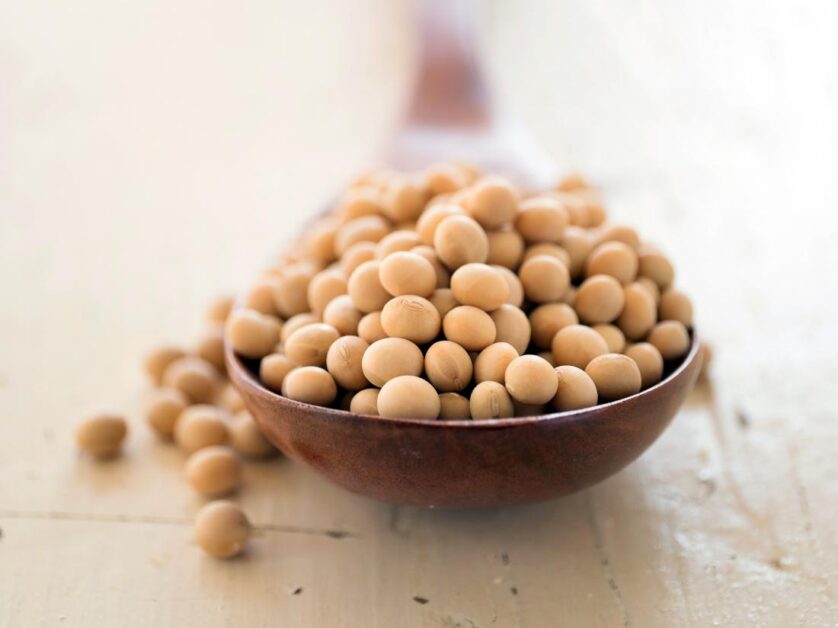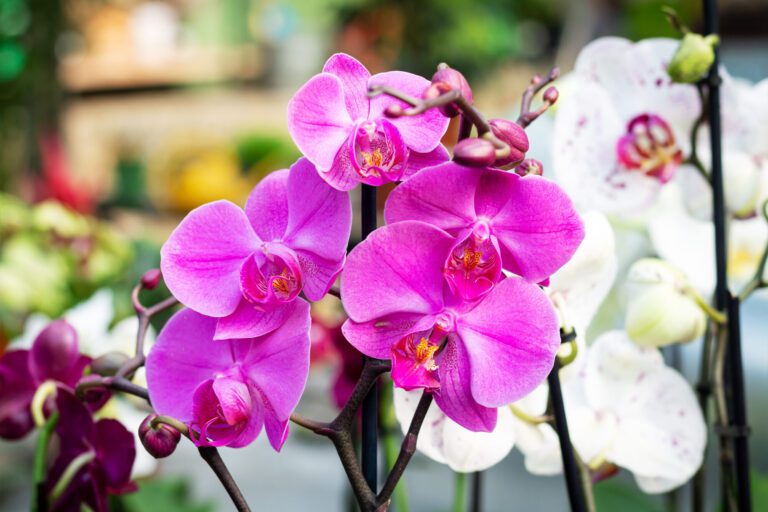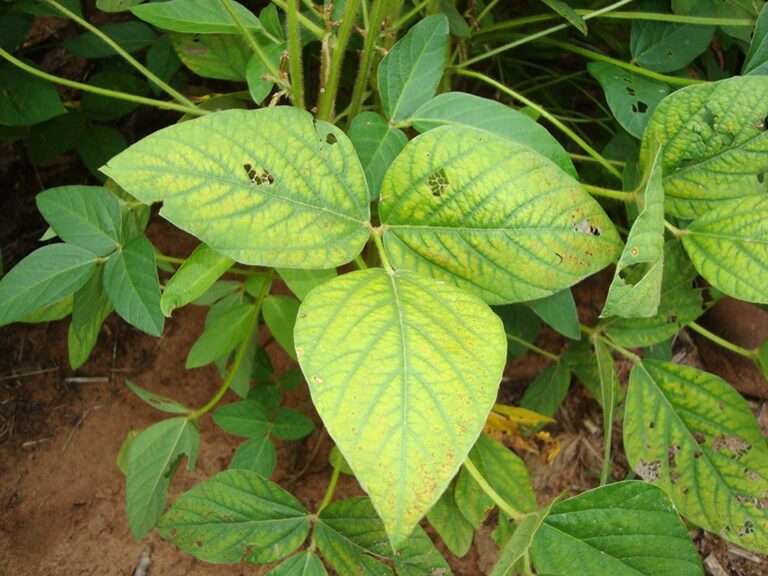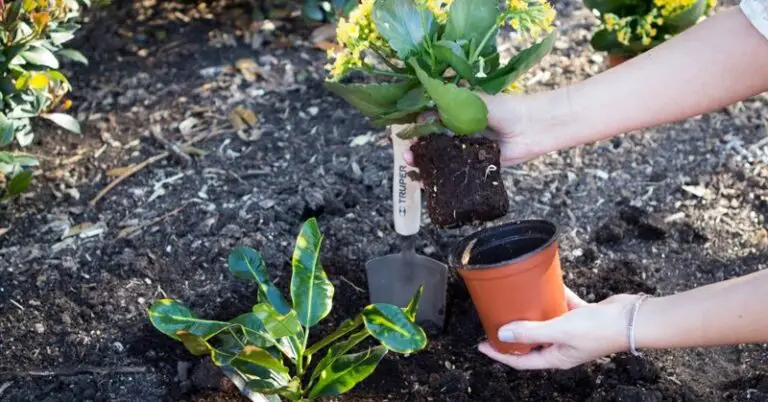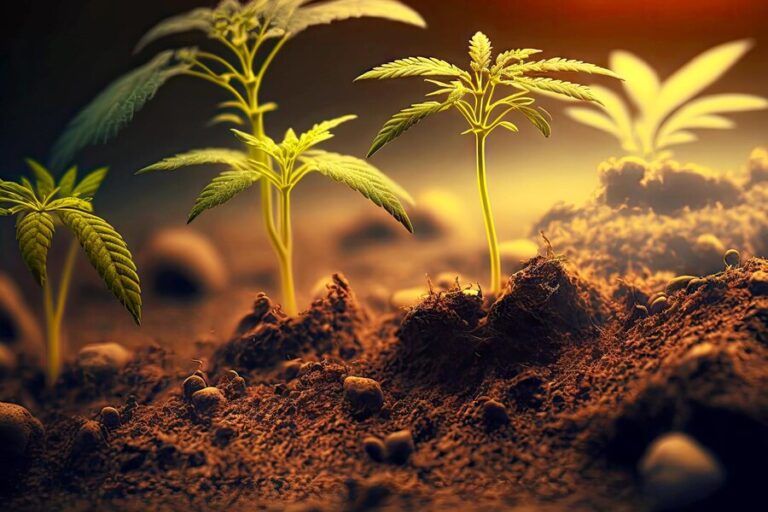Growing Soybeans: A Guide to Edamame
Understanding the Importance of Soil Preparation
Proper soil preparation is an essential first step in ensuring successful soybean cultivation. In order to achieve optimal growth and yield, it is crucial to understand the importance of preparing the soil before planting. Soil preparation involves several key factors such as soil testing, pH adjustment, and nutrient supplementation.
Soil testing is a crucial aspect of soil preparation as it allows for the identification of any deficiencies or imbalances in the soil. By analyzing the composition of the soil, farmers can determine the appropriate amount of fertilizers and amendments needed to optimize soil health. Testing also helps in determining the pH level of the soil, which is vital for the availability of essential nutrients to the soybean plants. Adjusting the pH level, if necessary, through the addition of lime or sulfur, ensures that the plants can efficiently take up nutrients from the soil.
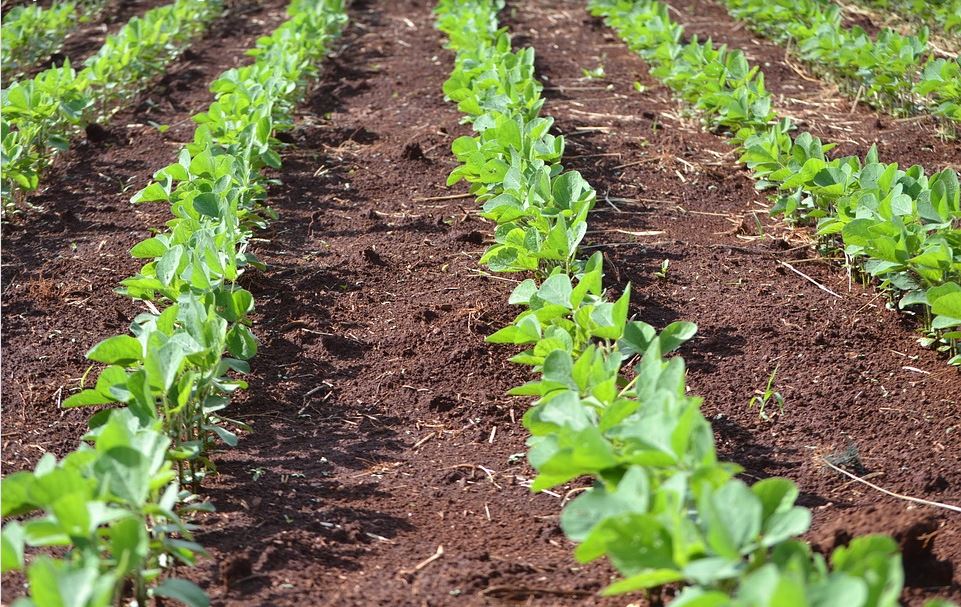
In addition to soil testing, it is important to consider nutrient supplementation during soil preparation. Soybeans have specific nutrient requirements, especially for nitrogen, phosphorus, and potassium. By incorporating the right amount of fertilizers and organic matter into the soil before planting, growers can ensure that the soybean plants have access to an adequate nutrient supply throughout their growth cycle. This not only promotes healthy plant development but also enhances the overall yield and quality of the harvested crop.
Selecting the Right Soybean Varieties for Edamame
When selecting the right soybean varieties for growing edamame, there are several factors to consider. The choice of variety can greatly impact the growth, yield, and overall success of your edamame crop. It is important to choose a variety that is well-suited to the specific growing conditions in your region and meets the desired characteristics for edamame production.
Firstly, consider the maturity group of the soybean variety. This refers to the number of days it takes for the plant to reach harvest maturity. For edamame production, it is recommended to choose a variety with a shorter maturity group, as this will ensure that the beans are harvested at the appropriate stage when they are still tender and sweet.
Additionally, pay attention to the plant height and growth habit of the variety. Some varieties may grow taller and require additional support, while others have a bushier habit and can be grown without trellising. Consider the available space in your garden or field, as well as your preferred cultivation method, when selecting a variety with the appropriate growth habit.
Lastly, consider the disease resistance traits of the variety. Soybeans are susceptible to various diseases, such as soybean cyst nematode, root rot, and bacterial blight. By choosing a variety that has been bred for resistance to these common diseases, you can greatly reduce the risk of crop losses and the need for chemical interventions.
Overall, selecting the right soybean varieties for edamame involves considering factors such as maturity group, growth habit, and disease resistance. By choosing varieties that are well-adapted to your growing conditions and meet the desired characteristics for edamame production, you can increase the likelihood of a successful harvest and enjoy the delicious flavors of homegrown edamame.
Sowing Seeds: Timing and Proper Seed Spacing
Timing and proper seed spacing are crucial factors in the successful growth and development of soybean plants. Knowing the optimal time to sow seeds ensures that they are planted in the most favorable conditions, maximizing their chance of germination. For soybeans, it is generally recommended to sow seeds when the soil temperature reaches at least 50°F (10°C) consistently, as this promotes quicker and healthier seedling emergence.
Additionally, proper seed spacing plays a significant role in plant growth and yield. Soybeans require adequate space to develop robust root systems and access essential nutrients and water in the soil. The ideal seed spacing for soybeans is typically 2-4 inches (5-10 centimeters) apart in rows that are 20-30 inches (50-75 centimeters) apart. This spacing allows each plant to have sufficient room to grow and prevents overcrowding, which can lead to competition for resources and reduced yield potential.
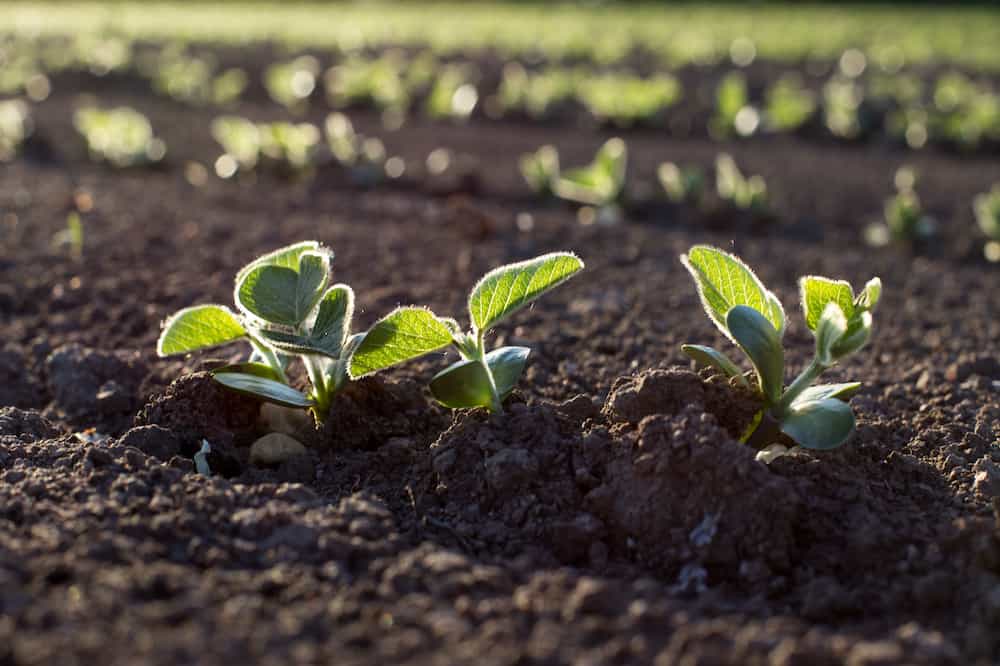
By adhering to the recommended timing and seed spacing guidelines, gardeners can optimize the growth and yield of their soybean plants. However, it is important to note that these recommendations may vary depending on specific soybean varieties and regional climate conditions. Therefore, it is advisable to consult local agricultural extension services or trusted gardening resources for more precise recommendations tailored to your specific location.
Nurturing Young Soybean Plants: Watering and Fertilization
When it comes to nurturing young soybean plants, proper watering and fertilization are crucial for their healthy growth and development. Watering is essential to ensure that the plants receive adequate moisture, especially during their early stages. However, overwatering can lead to root rot and other issues, so it’s important to find the right balance.
To determine when to water your soybean plants, check the soil moisture regularly by inserting your finger or a moisture meter about an inch into the soil. If the soil feels dry at that depth, it’s time to water. Keep in mind that soybeans generally require about 1 to 1.5 inches of water per week, but this can vary depending on factors such as climate and soil type. It’s also important to water in the morning to allow the foliage to dry before evening, reducing the risk of diseases.
Managing Weed Growth: Best Practices for Weed Control
Weed control is a critical aspect of managing soybean growth and ensuring optimal yields. Weeds compete with soybean plants for vital resources such as water, nutrients, and sunlight, ultimately hampering their growth and productivity. Implementing effective weed control practices is therefore essential for maintaining the health and vigor of soybean crops.
One of the best practices for weed control in soybean cultivation is employing a combination of cultural, mechanical, and chemical methods. Cultural methods involve techniques such as crop rotation, proper tillage, and timely planting to minimize weed infestations. Mechanical methods, like hand-weeding or using tools to remove weeds, can be effective for smaller areas or in organic farming systems. Chemical methods involve applying herbicides that specifically target the weeds while minimizing harm to the soybean plants. It is crucial to select herbicides based on the weed species present, as different herbicides are effective against different types of weeds. Additionally, following proper timing and application rates specified on the herbicide labels is essential to ensure maximum efficacy and minimize the risk of crop damage. By combining these approaches, soybean growers can effectively manage weed growth and help their crops thrive.
Protecting Soybeans from Common Pests and Diseases
One of the common challenges faced by soybean growers is the presence of pests and diseases that can significantly impact the health and yield of their crops. Protecting soybeans from these threats requires a proactive approach and a combination of preventive measures and targeted interventions.
First and foremost, it is crucial to ensure that soybean seeds are healthy and disease-free before planting. Infected seeds can introduce diseases into the field, causing widespread damage. To minimize this risk, it is recommended to source seeds from reputable suppliers and conduct seed treatments with fungicides to control seed-borne pathogens.
Regular scouting of the field is essential to monitor pest populations and disease incidence. By regularly inspecting plants for any signs of pests or diseases, growers can take early action and prevent further spread. It is also advisable to maintain a record of pest and disease occurrences in previous seasons, as this can help in planning for appropriate preventive measures.
Implementing integrated pest management (IPM) practices is another effective strategy for protecting soybeans. IPM involves combining cultural, biological, and chemical control methods to manage pests while minimizing environmental impact. For example, using resistant soybean varieties, rotating crops, and practicing proper field sanitation can help deter pests and reduce the risk of disease outbreaks.
When it comes to chemical control, it is essential to choose appropriate pesticides and apply them according to label instructions. Selective insecticides and fungicides should be used to specifically target the pests and diseases affecting soybeans, while minimizing harm to beneficial insects and the environment.
By adopting these proactive measures and implementing an integrated approach, growers can effectively protect soybeans from common pests and diseases, ensuring healthy and productive crops. Remember, prevention and early intervention are key to maintaining the vitality of your soybean plants and achieving optimal yields.
Here is a table about the diseases of soybean plants and their solutions:
| Pest/Disease | Symptoms | Management |
|---|---|---|
| Soybean Aphids (Aphis glycines) | Stunted growth, yellowing, curled leaves | Insecticidal soaps, neem oil, beneficial insects (ladybugs) |
| Soybean Cyst Nematode (Heterodera glycines) | Stunted growth, yellowing, reduced nodulation | Resistant soybean varieties, crop rotation, nematode-resistant cover crops |
| Brown Spot (Septoria glycines) | Brown lesions with yellow halos | Fungicide application, crop rotation, resistant varieties |
| Phytophthora Root Rot (Phytophthora sojae) | Wilting, yellowing, necrotic roots | Well-drained soil, resistant varieties, seed treatments |
| White Mold (Sclerotinia sclerotiorum) | White, fluffy growth on stems, wilting | Crop rotation, fungicide application, planting less dense |
| Japanese Beetles (Popillia japonica) | Skeletonized leaves, defoliation | Neem oil, insecticidal soap, pyrethroids |
| Leafhoppers | Yellowing, hopper burn, reduced yield | Insecticidal sprays, beneficial insects (predatory wasps) |
| Bean Pod Mottle Virus (BPMV) | Mottled and distorted pods, reduced yield | Planting virus-free seeds, controlling aphids |
| Frogeye Leaf Spot (Cercospora sojina) | Circular lesions with dark centers | Fungicide application, resistant varieties |
Recognizing the Optimal Temperature and Sunlight Requirements
Optimal temperature and sunlight requirements play a crucial role in the growth and development of soybeans. As a gardener, it’s essential to recognize these factors to ensure the success of your soybean crop.
Soybeans thrive in moderate temperatures, typically ranging from 68 to 86 degrees Fahrenheit (20 to 30 degrees Celsius). Temperatures below 50 degrees Fahrenheit (10 degrees Celsius) can hinder germination and slow down growth, while temperatures above 95 degrees Fahrenheit (35 degrees Celsius) can lead to heat stress and reduced yields. It’s important to monitor the weather forecast and plan your planting accordingly to avoid extreme temperature fluctuations.
In addition to temperature, sunlight is another vital factor to consider. Soybeans are sun-loving plants that require a minimum of six hours of direct sunlight daily. Insufficient sunlight can result in weak and spindly plants that are prone to diseases and pests. Be sure to select a well-drained location in your garden that receives ample sunlight throughout the day. By providing the optimal temperature and sunlight conditions, you will set your soybeans up for healthy growth and a bountiful harvest.
Thinning Seedlings for Optimal Plant Growth
Thinning seedlings is a critical step in ensuring optimal plant growth and productivity. As soybeans germinate and mature, they often grow close together, leading to overcrowding and competition for nutrients, water, and sunlight. Thinning, also known as thin spacing or thinning out, involves removing excess seedlings to allow for better air circulation, reduce disease spread, and promote individual plant development.
There are several factors to consider when thinning soybean seedlings. One key consideration is the spacing between plants. The recommended spacing for soybeans varies depending on the variety and growing conditions, but a general guideline is to thin seedlings to a distance of 2-4 inches apart. This spacing allows each plant to have adequate space to grow, access to sunlight, and access to the necessary resources for healthy development.
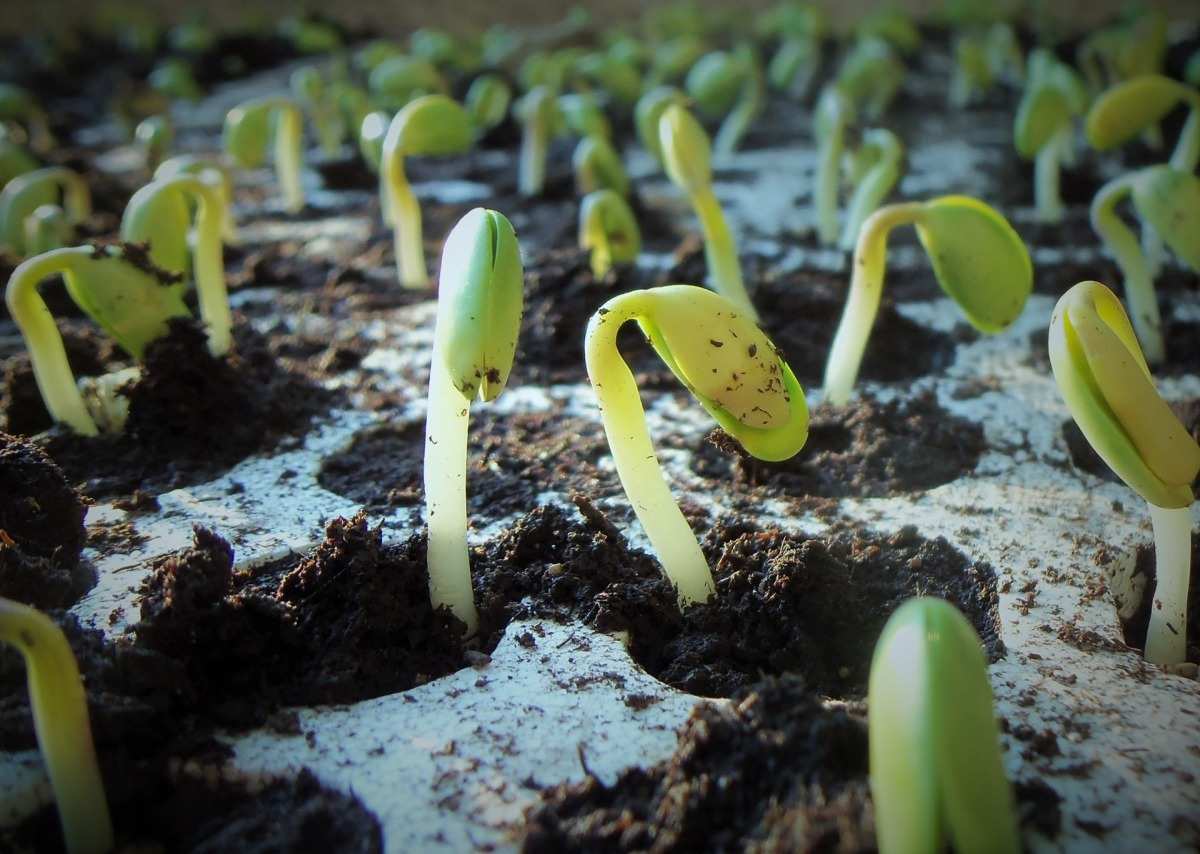
When thinning, it is crucial to carefully assess the health and vigor of each seedling. Remove any weak or diseased plants, as they are unlikely to contribute significantly to the overall yield. Focus your efforts on preserving the healthiest and strongest seedlings, ensuring that they have ample room to grow and thrive. One effective technique is to pinch off the excess seedlings at ground level, being careful not to disturb the root systems of the remaining plants.
Thinning seedlings may seem counterintuitive, as it involves removing some healthy-looking plants. However, this practice allows the remaining seedlings to have access to the necessary resources for optimal growth and development. By adhering to proper thinning techniques, you are setting the stage for robust soybean plants that can withstand environmental challenges and produce a bountiful harvest.
Pruning Soybean Plants to Promote Air Circulation
Pruning soybean plants is a crucial step in promoting optimal air circulation, which is essential for their overall health and productivity. By removing excess foliage and creating a well-ventilated environment, you can help prevent moisture buildup, reduce the risk of fungal diseases, and improve the plant’s access to sunlight.
When it comes to pruning soybeans, it’s important to focus on removing any dead or diseased leaves, as well as those that are blocking sunlight from reaching the lower parts of the plant. This selective pruning should be done carefully and with sterilized pruning shears to prevent the spread of infections. Additionally, thinning out dense areas of growth can open up the plant canopy and allow for better air movement, reducing the likelihood of plant diseases caused by high humidity.
While pruning may seem like a simple task, it requires a keen eye and a delicate touch to ensure you’re not removing too much foliage, which could negatively impact the plant’s ability to photosynthesize and produce energy. By striking a balance between removing excessive growth and maintaining an adequate leaf surface, you can help your soybean plants thrive and achieve their maximum potential.
Understanding the Role of Nitrogen Fixation in Soybean Growth
Nitrogen fixation is a crucial process for the growth and development of soybeans. As a legume, soybeans have a unique ability to form a symbiotic relationship with specific bacteria called rhizobia. These bacteria reside in the nodules present on the roots of soybean plants. Through this partnership, soybeans are able to convert atmospheric nitrogen into a form that is usable by the plant.
The role of nitrogen fixation in soybean growth is significant. Nitrogen is an essential nutrient for plant development, and it plays a key role in various physiological processes such as protein synthesis, chlorophyll production, and overall plant vigor. The ability of soybeans to fix their own nitrogen reduces the reliance on external sources of nitrogen fertilizers, making them an environmentally friendly crop. Moreover, this process helps improve soil fertility, as the nitrogen released into the soil from decaying soybean residues can be utilized by subsequent crops.
In order to maximize the nitrogen fixation capacity of soybeans, it is important to provide the plant with optimal conditions. This includes ensuring proper nodulation through the use of high-quality inoculants, maintaining appropriate soil pH levels, and avoiding excessive soil compaction. Additionally, proper management practices, such as avoiding flooding and providing adequate phosphorus levels, can further enhance nitrogen fixation in soybeans. By understanding and harnessing the role of nitrogen fixation in soybean growth, gardeners can promote healthier plants and sustainable agricultural practices.
Recognizing the Signs of Nutrient Deficiency and Appropriate Remedies
Nutrient deficiency in soybean plants can have a significant impact on their overall health and productivity. As a gardener or farmer, it is crucial to be able to recognize the signs of nutrient deficiency and take appropriate measures to address them. One common indicator of nutrient deficiency is the discoloration of leaves. For example, a lack of nitrogen may cause the leaves to turn yellow, while a shortage of phosphorus can result in a reddish-purple tint. Additionally, stunted growth, reduced flowering or fruit production, and overall weak plant vigor may also suggest nutrient deficiencies. It is essential to carefully monitor your plants and be proactive in identifying and addressing any signs of nutrient deficiency to ensure optimal growth and yield.
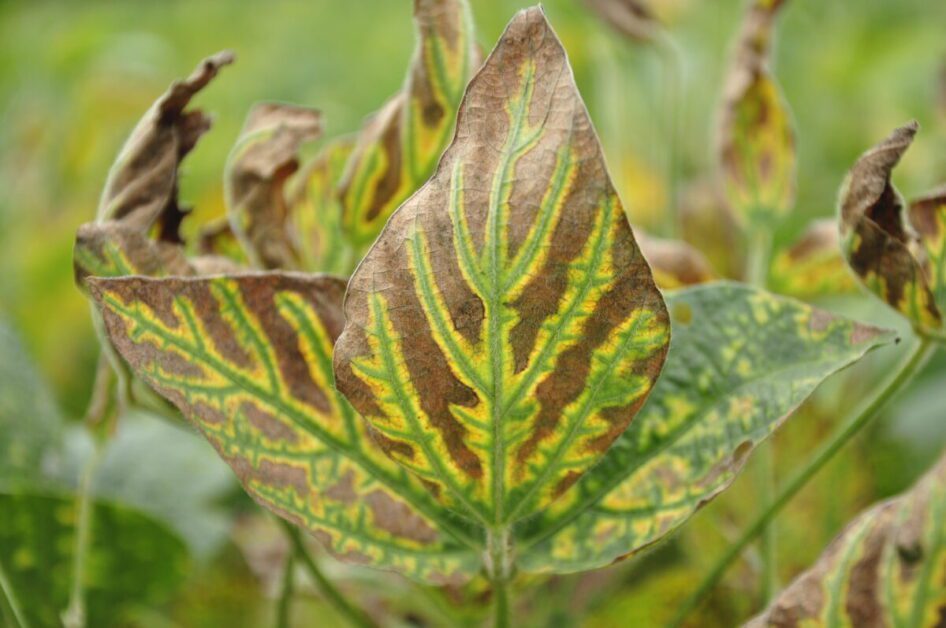
When it comes to remedying nutrient deficiencies in soybean plants, there are several effective approaches to consider. The first step is to determine which specific nutrient the plant is lacking. Soil and plant tissue testing can provide valuable insights into the nutrient levels and help you make informed decisions on the appropriate course of action. Once you have identified the specific nutrient deficiency, there are a few remedies that you can implement. One common method is through the application of fertilizers. Depending on the nutrient in question, you may opt for organic or synthetic fertilizers to replenish the depleted nutrients in the soil. Another approach is to amend the soil with organic matter, such as compost or well-rotted manure, which can improve nutrient availability over the long term. Additionally, foliar sprays can be used to provide a quick and direct supply of nutrients to the plants. It is important to follow proper application rates and timings to ensure that the plants receive the necessary nutrients without causing any harm. By promptly recognizing nutrient deficiencies and employing appropriate remedies, you can help your soybean plants thrive and achieve their full potential.
Monitoring and Adjusting pH Levels for Healthy Soybean Growth
Maintaining the appropriate pH levels is crucial for the healthy growth of soybeans. pH, or potential of hydrogen, measures the acidity or alkalinity of the soil and plays a significant role in nutrient availability. Most soybean plants thrive in slightly acidic to neutral soil with a pH range of 6.0 to 7.0. Monitoring and adjusting pH levels ensures that the soil provides the optimal conditions for nutrient uptake and overall plant health.
To monitor pH levels, it is important to regularly test the soil. Soil pH test kits are readily available at gardening centers and can provide accurate measurements. These test kits typically come with easy-to-follow instructions and color-coded charts that help determine the pH level of the soil. It is advisable to take multiple samples throughout the planting area to ensure a representative reading.
Once the pH levels are determined, adjustments can be made to bring the soil into the desired range. If the soil is too acidic (pH below 6.0), incorporating lime can help raise the pH. Lime is readily available in both powdered and granulated forms and should be applied according to the manufacturer’s instructions. On the other hand, if the soil is too alkaline (pH above 7.0), the addition of elemental sulfur or other suitable acidifying agents can lower the pH. It is crucial to carefully follow the recommended rates and guidelines when making pH adjustments to avoid over-application, which can have negative effects on soybean growth.
By regularly monitoring and adjusting pH levels, gardeners can ensure that their soybeans have access to the necessary nutrients for healthy growth and maximum yield. Remember, maintaining proper pH balance is just one aspect of successful soybean cultivation, and it is important to consider other factors such as soil fertility, water requirements, and pest management techniques for optimal results.
Here is a table that shows us the factors that needs to be considered for pH levels:
| Considerable Factor | Details |
|---|---|
| Importance of pH | pH measures soil acidity/alkalinity; crucial for nutrient availability; optimal range: 6.0 to 7.0 |
| Testing Soil pH | Regular testing with soil pH kits; multiple samples for representative readings |
| Recommended pH Range | 6.0 to 7.0 |
| Adjusting Soil pH | – Too acidic (pH below 6.0): Incorporate lime according to manufacturer’s instructions |
| – Too alkaline (pH above 7.0): Add elemental sulfur or acidifying agents | |
| Testing Kit Features | Typically comes with easy-to-follow instructions and color-coded charts |
| Other Considerations | – Regular monitoring crucial; adjust pH as needed |
| – pH balance is one factor; consider soil fertility, water requirements, and pest management | |
| for optimal soybean cultivation |
Harvesting Edamame: Determining the Right Time
Determining the right time to harvest edamame is crucial for ensuring optimal flavor and texture in these delicious soybean pods. The ideal harvesting window is typically when the pods are fully developed, but still tender and bright green in color. This is usually around 80 to 90 days after sowing the seeds, but it can vary depending on the specific variety and growing conditions.
To determine if your edamame is ready for harvesting, closely examine the pods. They should be plump and filled out, with seeds that have reached their maximum size. Gently squeeze a few pods to check for firmness – they should feel slightly firm but not rock hard. Additionally, the pods should still be tightly closed and not showing signs of splitting open.
It’s important to note that harvesting edamame too early can result in underdeveloped seeds and a lack of sweetness, while waiting too long can lead to tougher and less flavorful pods. Regularly check the plants as they approach maturity and harvest the pods when they meet these criteria to enjoy the best tasting edamame. So, let’s delve into the next exciting topic of this article – Proper Post-Harvest Handling and Storage Techniques.
Proper Post-Harvest Handling and Storage Techniques
Proper post-harvest handling and storage techniques are crucial for maintaining the quality and nutritional value of edamame. After harvesting, it is important to promptly cool the pods to slow down their respiration rate and prevent spoilage. The ideal temperature for storing edamame is around 32 to 35°F (0 to 2°C), with a relative humidity of 85 to 90%. These conditions help to prolong the shelf life and preserve the freshness of the pods.
When storing edamame, it is essential to protect them from moisture and excessive humidity. Excess moisture can lead to microbial growth and the development of molds, which can cause spoilage. Therefore, it is recommended to store edamame in breathable bags or containers to allow for air circulation and prevent the accumulation of moisture.
Additionally, it is important to regularly monitor the stored edamame for any signs of decay or pest infestation. Check for any wilting, discoloration, or unusual odors, as these may indicate spoilage. Removing any damaged or diseased pods immediately can prevent the spread of decay and protect the remaining edamame.
Following these proper post-harvest handling and storage techniques will ensure that your edamame stays fresh and maintains its quality for an extended period. By taking these precautions, you can enjoy the full nutritional benefits and delicious taste of your homegrown edamame throughout the year.
Watch the video to learn more about growing young soybean.
Tips for Saving Seeds for Future Planting
Saving seeds from your edamame plants is not only a cost-effective way to grow your own soybeans in the future, but it also allows you to maintain the desirable characteristics of the varieties you love. When selecting plants for seed saving, it’s important to choose the healthiest and most productive plants. Look for plants that have displayed vigorous growth, disease resistance, and an abundance of high-quality pods. By saving seeds from these plants, you are essentially selecting for these favorable traits and ensuring their continuation in your future crops.
To save edamame seeds, start by allowing the pods to mature fully on the plant. The pods should turn a yellowish-brown color and feel dry and papery to the touch. Once the pods are completely dry, remove them from the plant and shell them to reveal the seeds inside. Thoroughly clean the seeds by removing any remaining pod debris. It’s important to store the cleaned seeds in a cool, dry, and dark place to maintain their viability. Consider using resealable bags or airtight containers to protect the seeds from moisture and pests. With proper storage, edamame seeds can remain viable for up to four years, allowing you to enjoy a continuous supply of delicious homegrown soybeans.
Exploring Culinary Uses for Edamame: Recipes and Ideas
Edamame, also known as young soybeans, is a versatile ingredient that can be used in a wide variety of culinary creations. From appetizers to main dishes, and even in desserts, edamame adds a nutritious and flavorful twist to any recipe. One popular way to enjoy this delightful legume is to steam the pods and then sprinkle them with some sea salt for a simple and satisfying snack. The natural sweetness of the edamame combined with the saltiness of the seasoning creates a harmonious taste that is hard to resist.
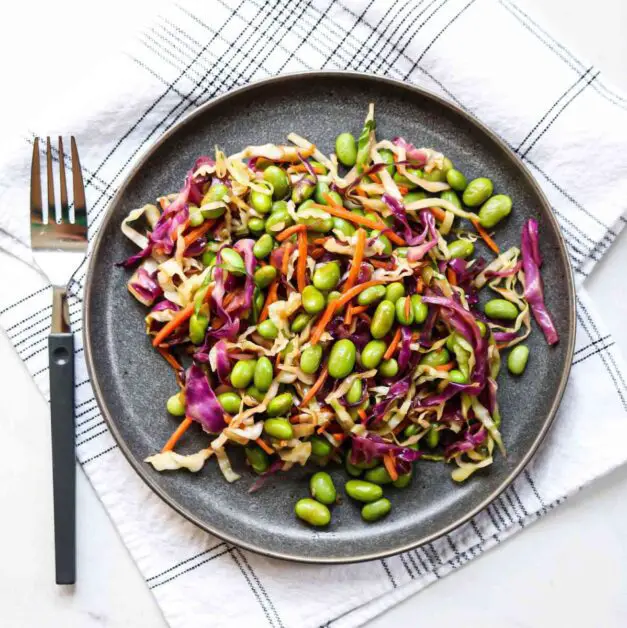
For those looking to incorporate edamame into their main dish, consider adding it to stir-fries or salads for an added burst of protein and vibrant color. The tender and slightly crunchy texture of the edamame pods pairs well with a variety of ingredients, including vegetables, tofu, and even meat. To bring out the flavor of the edamame, consider marinating it in a mixture of soy sauce, garlic, and ginger before adding it to your dishes. This will infuse the edamame with a rich umami taste that will elevate any meal.
Not just limited to savory dishes, edamame can also be used to create unique and delicious desserts. Try blending steamed edamame with dates and a splash of almond milk for a creamy and nutritious smoothie. You can also experiment with adding pureed edamame to baked goods such as muffins or brownies for a surprising twist that will impress your taste buds. The natural sweetness and vibrant green color of the edamame will add a pop of excitement to your dessert creations.
Whether you’re a seasoned chef or a cooking enthusiast, exploring the culinary uses of edamame opens up a world of possibilities. From simple snacks to complex recipes, the versatility of this legume is truly remarkable. So go ahead, get creative in the kitchen, and let edamame take your dishes to the next level.
What are some common pests and diseases that can affect soybeans?
Some common pests that can affect soybeans include aphids, bean leaf beetles, and soybean cyst nematodes. Diseases that can affect soybeans include soybean mosaic virus, brown spot, and white mold.
How can I protect my soybeans from pests and diseases?
To protect soybeans from pests, you can use insecticides or natural predators like ladybugs. To prevent diseases, it’s important to practice crop rotation, use disease-resistant varieties, and maintain proper soil drainage and fertility.
What are the optimal temperature and sunlight requirements for soybean growth?
Soybeans grow best in temperatures between 68°F and 77°F (20°C and 25°C) with full sun exposure. They require at least 6 to 8 hours of direct sunlight per day for optimal growth.
How do I determine the right time to harvest edamame?
Edamame is typically harvested when the pods are plump and bright green in color. The ideal time to harvest is when the pods are fully developed but before they start to turn yellow or brown.
What are some post-harvest handling and storage techniques for edamame?
After harvesting, it’s important to immediately cool the edamame to preserve its freshness. You can do this by placing the pods in ice water or storing them in a refrigerator. For longer-term storage, you can blanch the edamame and freeze it in airtight containers.
Can I save the seeds from my harvested edamame for future planting?
Yes, you can save the seeds from your harvested edamame for future planting. Make sure to dry the seeds thoroughly before storing them in a cool, dry place.

